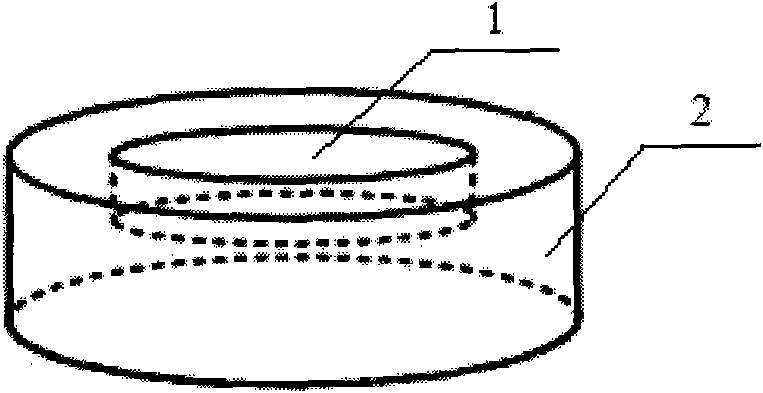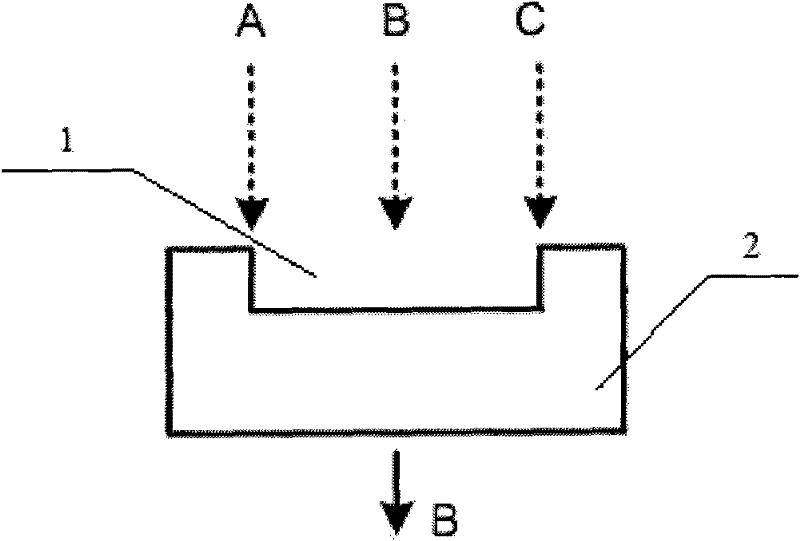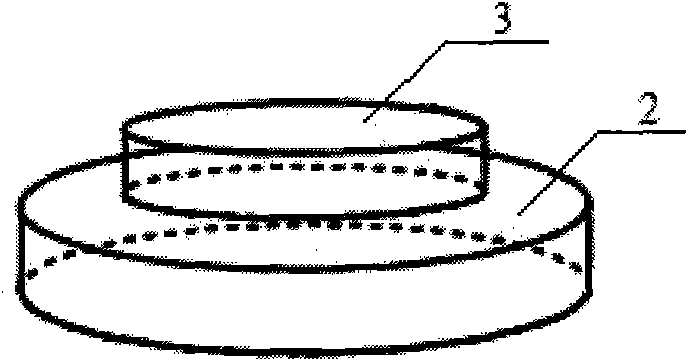Super-resolution optical imaging device and method
A super-resolution and optical imaging technology, applied in optics, optical components, instruments, etc., can solve the problems of unsuitable application and high cost of light source, and achieve the effect of simple structure, small size and low cost
- Summary
- Abstract
- Description
- Claims
- Application Information
AI Technical Summary
Problems solved by technology
Method used
Image
Examples
Embodiment Construction
[0023] Below in conjunction with accompanying drawing, the technical scheme of invention is described in detail:
[0024] Such as Figure 1 to Figure 4 As shown, the present invention is a device and an imaging method thereof utilizing self-mixing interference to achieve super-resolution optical imaging, a substrate 2 made of a transparent material and a step 3 on the substrate 2 (or a groove 1 on the substrate 2 )constitute. The principle is: the imaging beam converges on the surface of the step 3 (or groove 1) under the action of the focusing lens, and part of the light is incident on the edge of the step 3 (or groove 1) and split by the wave surface. Step 3 (or groove 1) and the outgoing light path that does not pass through step 3 (or groove 1) are different, resulting in a phase difference. The height of the control step 3 (or groove 1) makes the phase difference of the two beams pi . When the two beams of light self-mix and interfere under the step 3 (or the groove 1)...
PUM
 Login to View More
Login to View More Abstract
Description
Claims
Application Information
 Login to View More
Login to View More - R&D
- Intellectual Property
- Life Sciences
- Materials
- Tech Scout
- Unparalleled Data Quality
- Higher Quality Content
- 60% Fewer Hallucinations
Browse by: Latest US Patents, China's latest patents, Technical Efficacy Thesaurus, Application Domain, Technology Topic, Popular Technical Reports.
© 2025 PatSnap. All rights reserved.Legal|Privacy policy|Modern Slavery Act Transparency Statement|Sitemap|About US| Contact US: help@patsnap.com



